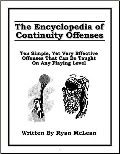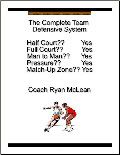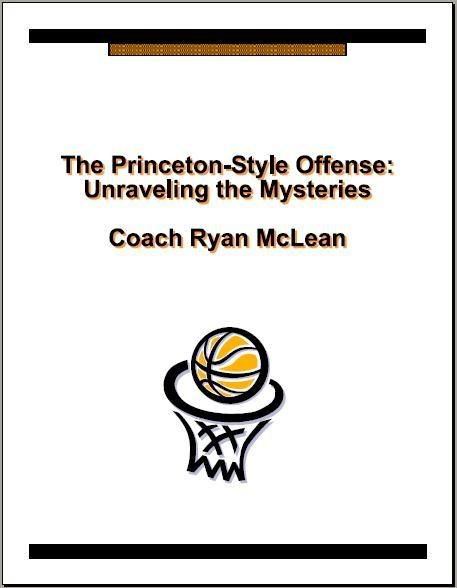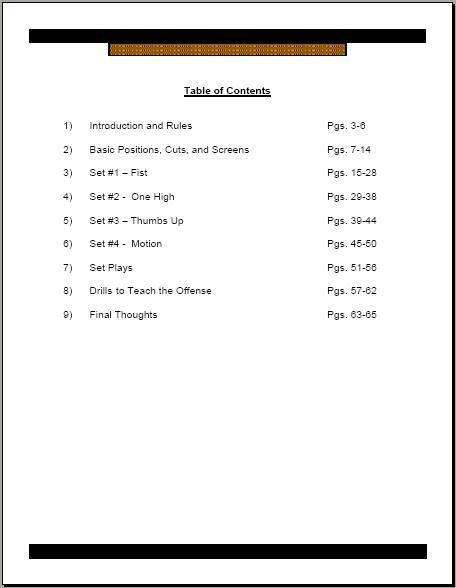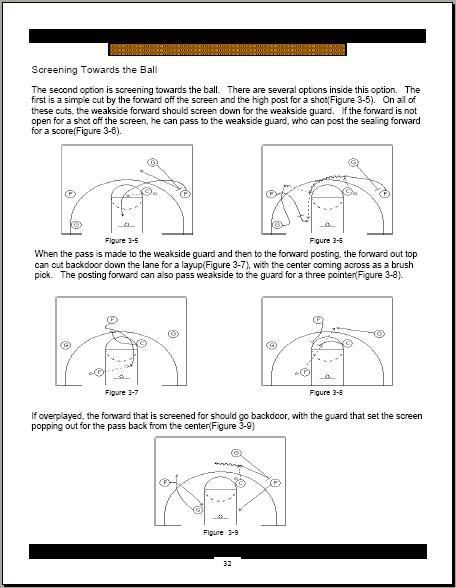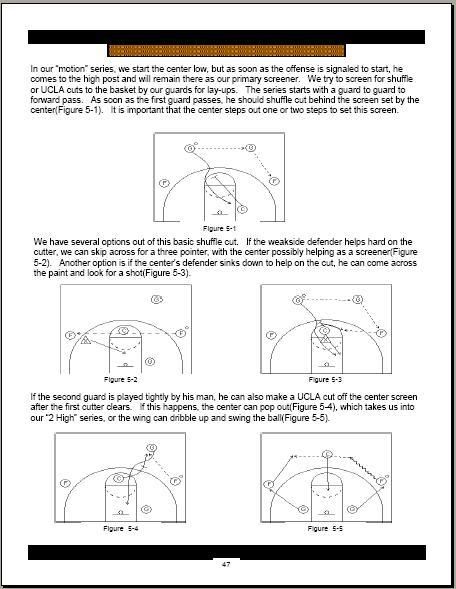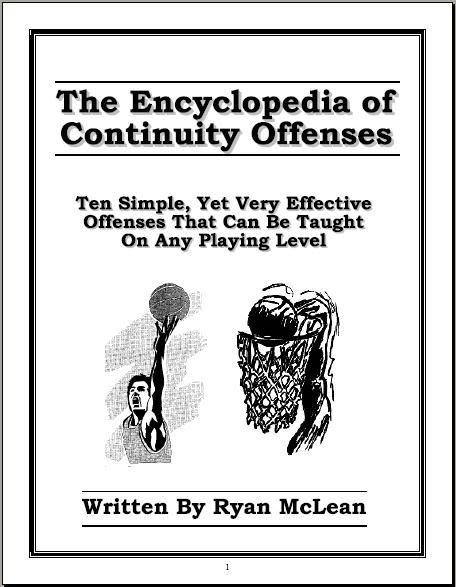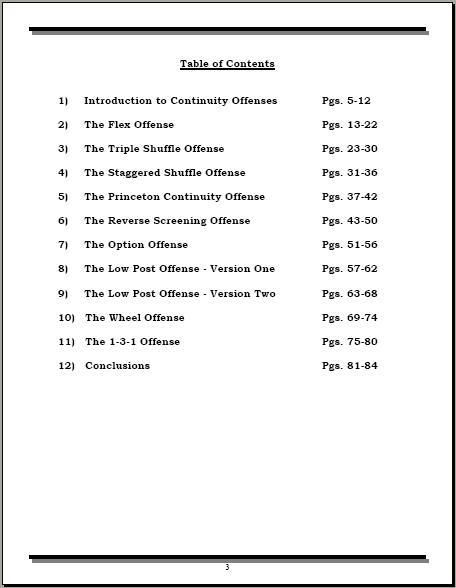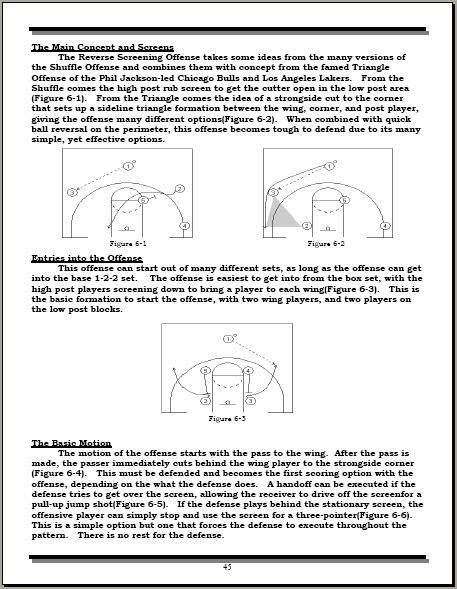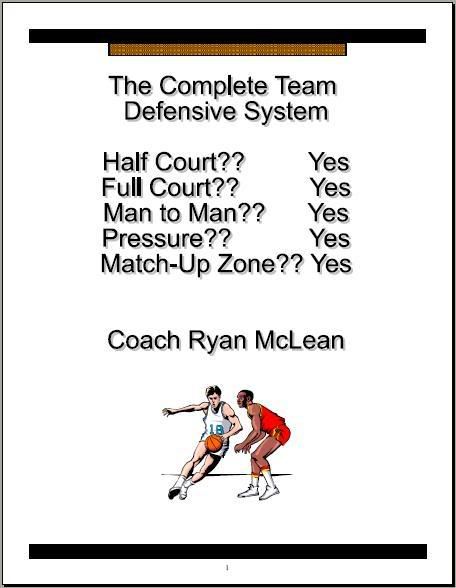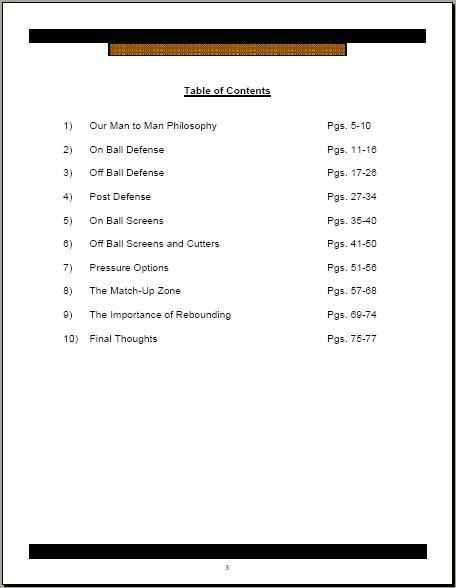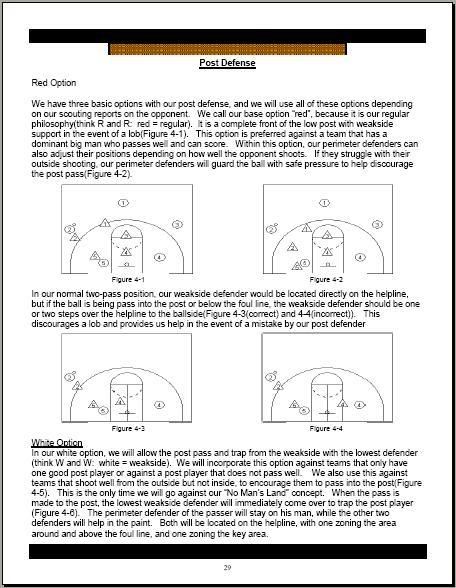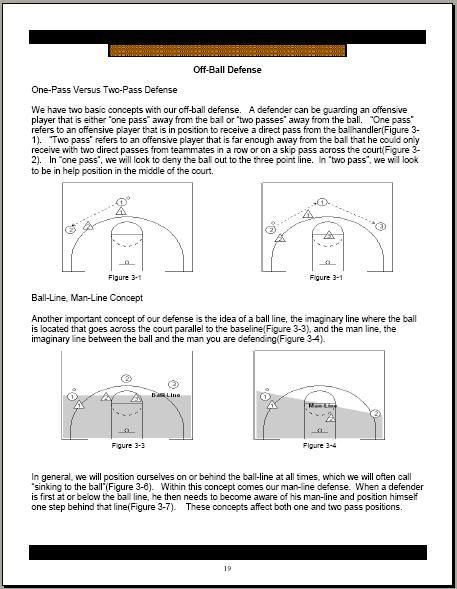Here is a little preview.
Princeton Offense - Entries
One of the nice things about the Princeton offense is that it is very flexible in that it can be initiated with almost any type of entry. The various entry cuts are predicated automatically by the ballhandler's entry pass or dribble clear. The off guard (Hawk) and high post rub (UCLA) are the most commonly used entries to initiate the offense; however, recently, the Mid Screen entry is becoming the entry of choice. All entries can be ran equally on both sides of the floor.
Entries: | Hawk | UCLA | Mid Screen | Dribble Clear | Zipper | High Post |
Hawk Entry - Weakside Guard Rub
|
Ballhandler O1 passes to O2 and rubs off O5's high post screen to basket. O2 passes to wing O4 and cuts to opposite corner. |
If O1 is not open on basket cut or post up, 04 passes out to O5 initiating wing exchanges or down screens. |
UCLA Entry - Strongside Guard Rub or Basket Cut
|
Strongside guard O1 makes a wing entry pass to O4 and rubs off O5’s high post screen to basket. Note: O1 also has option of making a direct "Give & Go" cut to basket. |
If/when O4 cannot pass to O1, O4 makes a reversal pass out to O5 initiating wing exchanges or down screen action. |
Mid Screen Entry
|
O2 clears to opposite corner as ballhandler O1 drives off O5's high post screen. O1 has option or turning the corner and driving to the basket or passing to wing o4 and cutting to the basket. |
If/when O4 cannot pass to O1, O4 makes a reversal pass out to O5 initiating wing exchanges or down screens. |
Dribble Clear Entry - Strongside Wing
|
O1 dribbles clears wing O4. O1 looks to feed O4 on back cut to basket or post up. |
If wing o4 is not open, 01 makes a reversal pass out to O5 initiating wing exchanges or down screen action. |
Zipper Entry - Wing Loop
|
O1 dribble clears wing O4 as high post O5 rolls down to set a down screen. O1 looks to feed O4 popping out or O5 posting up against a smaller defender if the defense switches. |
If defender X4 should over play and deny the passing lane, O4 immediately back cuts to basket for an over the top lob pass from O1. |
High Post Entry
|
Ball handler O1 passes to high post O5. O1 and O2 cut directly to basket looking for possible feed from O5. |
If not open on basket cuts, O3 and O4 set down screens for O1 and O2 crossing under the basket. Note: O1 and O2 have option of faking the cross and popping out directly off of O3's and O4's down screens. |

